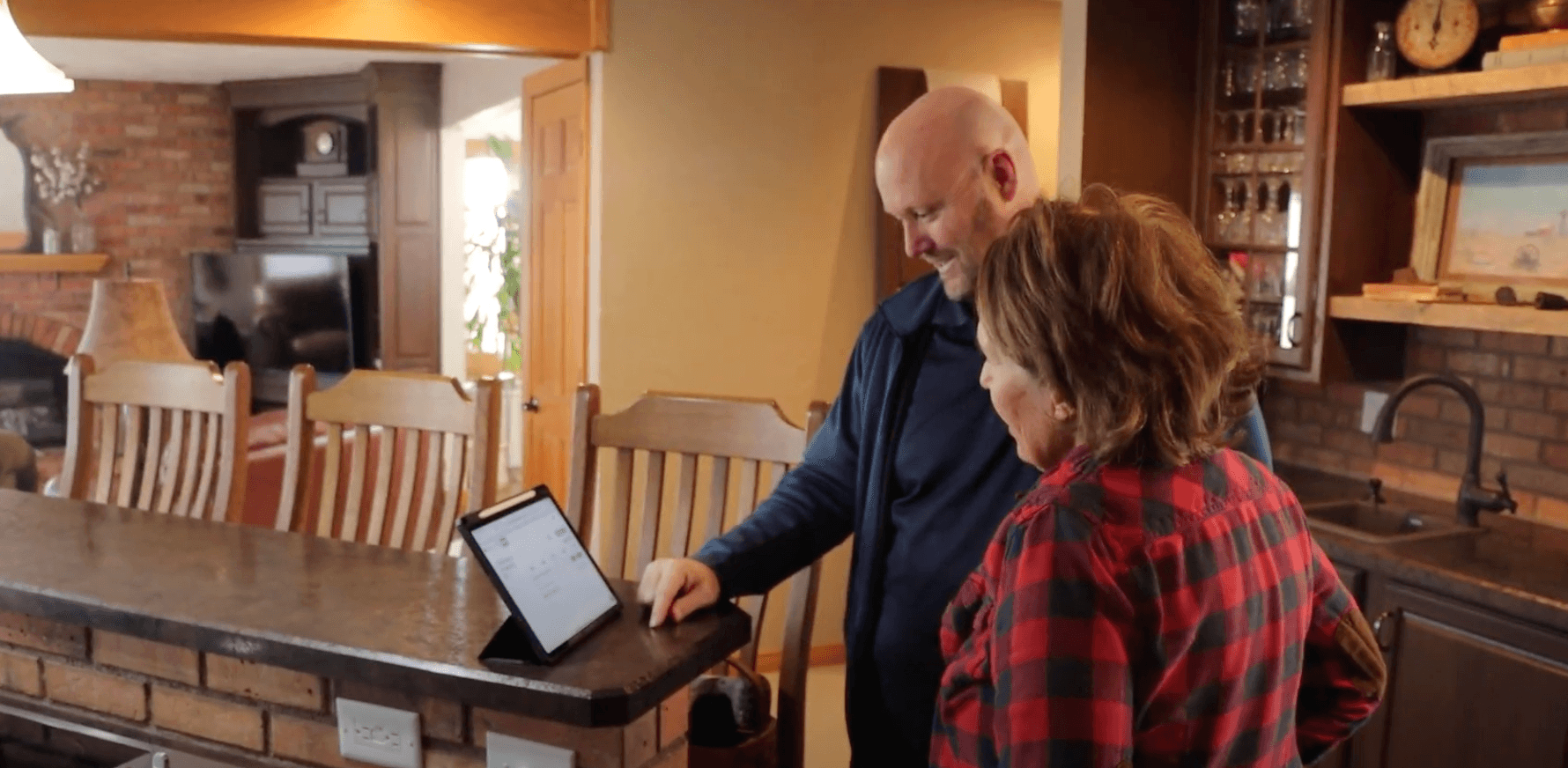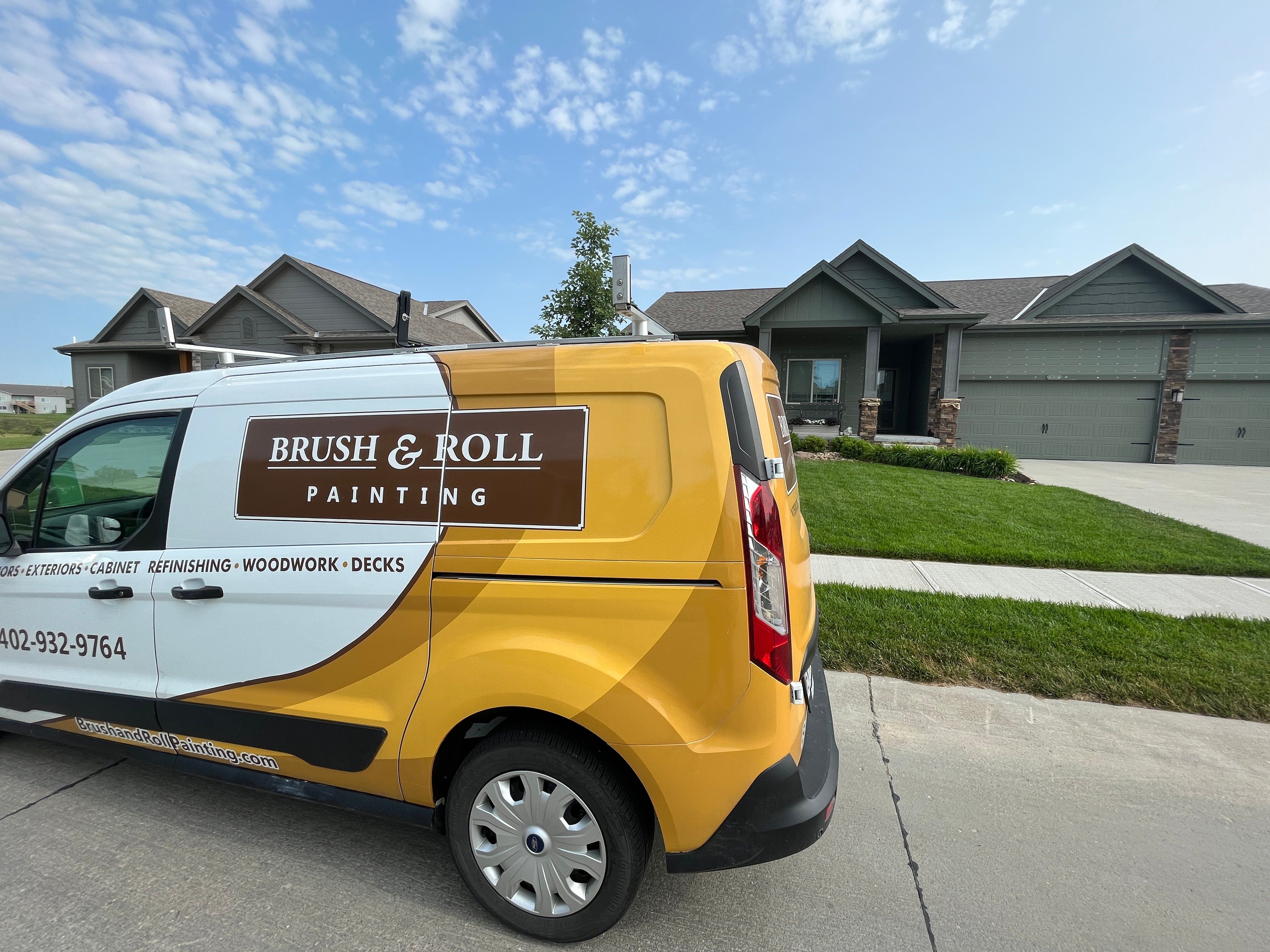9 Safety Tips for Peeling Lead Paint in Omaha Homes
November 12th, 2024
5 min read
-Nov-12-2024-04-56-34-1157-PM.png?width=800&height=418&name=Blog%20Post%20Image%20Size%20(2)-Nov-12-2024-04-56-34-1157-PM.png)
So you have lead paint on the interior and/or exterior of your home and it’s peeling or chipping. You know it needs to be repainted, but you’re still in the process of hiring a painter. This could take 1-2 months until the project begins, but you and your family must be safe from lead paint in the meantime.
At Brush & Roll Painting in Omaha, NE, we are EPA-certified. We've seen firsthand the challenges that lead paint can pose, and we're here to share our expertise.
In this guide, we will focus on how you can live safely with potential lead paint hazards before professional painters can address the issue. You'll learn how to identify potential lead paint problems, understand the risks, and most importantly, how to protect yourself and your loved ones in your day-to-day life. By the time you finish reading, you'll have a clear action plan for managing lead paint risks in your home and keeping your family safe until the professionals can take care of the problem.
Understanding Lead Paint in Omaha
Omaha, like many American cities, experienced significant growth in the early to mid-20th century. Many of our beloved neighborhoods - Dundee, Benson, Aksarben, and others - are filled with homes built during this period. Unfortunately, this era coincides with the widespread use of lead-based paint in residential construction.
Lead was a popular paint additive because it enhanced color vibrancy, accelerated drying time, and increased durability. The problem? We now know that lead is highly toxic, especially to children and pregnant women.
In 1978, the federal government banned the use of lead in household paints. However, homes built before this date are likely to have lead paint, often beneath newer layers of paint.
When any surface painted with lead paint begins to significantly chip or peel, the threat of lead paint becomes a significant problem.
How Lead Enters the Body
Understanding how lead enters the body is crucial for effective prevention. There are two primary routes of exposure:
- Inhalation: When lead paint deteriorates, it creates a fine dust that can be easily inhaled.
- Ingestion: Lead dust can settle on surfaces throughout your home. It can then be ingested through hand-to-mouth contact or contaminate food and drinks.
Children are particularly vulnerable because they often put their hands or objects in their mouths and spend more time on the floor where dust settles.
Often, it can take months or years of lead build-up before noticeable effects.
-Apr-26-2024-06-41-21-9529-PM.png?width=582&height=304&name=Blog%20Post%20Image%20Size%20(1)-Apr-26-2024-06-41-21-9529-PM.png)
The Health Risks: Why Lead Exposure is Serious
The health effects of lead exposure are severe and can be long-lasting. According to the Centers for Disease Control and Prevention (CDC), there is no safe level of lead exposure for children. Even low levels of lead in the blood can cause:
- Decreased IQ and cognitive function
- Learning disabilities
- Behavioral problems
- Slowed growth
- Hearing problems
- Anemia
In adults, lead exposure can lead to:
- High blood pressure
- Kidney damage
- Reproductive problems
Tips for Living Safely with Potential Lead Paint
Now that we understand the risks, let's dive into practical tips for living safely with potential lead paint hazards until professionals can address the issue.
1. Identify Potential Problem Areas
The first step in managing lead paint risks is knowing where to look. Here are some key areas to keep an eye on:
- Windowsills and frames: These areas often have high friction, causing the paint to wear down faster.
- Doors and door frames: Like windows, these high-use areas are prone to paint wear.
- Stairs and railings: These surfaces see a lot of traffic and can accumulate paint dust.
- Porches and exterior surfaces: Exposed to the elements, exterior paint is more likely to peel and chip.
Look for any signs of peeling, chipping, or chalking paint in these areas. Remember, even if the top layer of paint is lead-free, there could be lead paint underneath.

2. Keep it Clean
Regular cleaning is your first line of defense against lead dust. Here's how to do it safely:
- Use damp cleaning methods: Instead of dry sweeping or dusting, which can spread lead dust, use damp mops and wet cloths to clean floors and other surfaces.
- Focus on horizontal surfaces: Pay extra attention to windowsills, countertops, and floors where dust tends to settle.
- Clean frequently: Make this a regular part of your cleaning routine, especially in high-risk areas.
- Use the right tools: Disposable cleaning cloths or paper towels are best. Avoid using household vacuums unless they're equipped with a HEPA filter.
3. Practice Good Hygiene
Simple hygiene practices can go a long way in reducing lead exposure:
- Wash hands frequently: Especially before eating, drinking, or sleeping.
- Keep toys clean: Regularly wash children's toys, especially those that might end up in their mouths.
- Leave shoes at the door: This helps prevent tracking in lead dust from outside.
- Separate play and eating areas: If possible, don't let children play in areas with peeling paint, and never let them eat in these areas.
4. Maintain Good Nutrition
A healthy diet can actually help reduce lead absorption. Focus on foods rich in:
- Calcium: Found in dairy products, leafy greens, and fortified foods.
- Iron: Present in lean red meats, beans, and fortified cereals.
- Vitamin C: Abundant in citrus fruits, berries, and many vegetables.

5. Create Barriers
While you're waiting for professional remediation, you can create temporary barriers to minimize contact with problem areas:
- Cover peeling paint: Use contact paper or duct tape to cover areas of peeling paint temporarily. This isn't a long-term solution, but it can help in the short term.
- Block off problem areas: If possible, restrict access to areas with visible paint deterioration, especially for children.
- Use washable mats: Place washable mats inside and outside entry doors to catch dust and dirt.
6. Be Cautious with Renovations
If you're planning any home renovations, even minor ones, be extra cautious:
- Avoid DIY: Don't sand, scrape, or otherwise disturb potential lead paint yourself.
- Hire certified professionals: If you need work done, make sure to hire contractors certified in lead-safe work practices.
- Plan for containment: If work must be done, plan to seal off the area and possibly relocate temporarily, especially if you have young children or pregnant women in the home.
7. Educate Your Family
Make sure everyone in your household understands the potential risks and precautions:
- Teach children not to put non-food items in their mouths, especially paint chips or dust.
- Explain the importance of good hygiene practices to older children.
- Ensure that all adult members of the household are on the same page about cleaning and safety practices.
8. Consider Professional Testing
If you're unsure about the presence of lead paint in your home, consider professional testing:
- Home test kits are available but can be unreliable.
- Professional lead inspectors can give you a definitive answer and help you develop a management plan.

9. Plan for Professional Remediation
While these tips can help you manage in the short term, the ultimate goal should be professional remediation:
- Start getting quotes from certified lead abatement professionals or lead-safe certified painters.
- Plan your budget and timeline for addressing the issue permanently.
- In the meantime, keep up with the safety practices outlined above.
Lead Paint in Your Home
Let's recap the key points:
- Lead paint is a serious health hazard, especially in homes built before 1978.
- Regular cleaning, good hygiene, and smart precautions can significantly reduce your risk.
- While you can manage the risk in the short term, professional remediation is the ultimate goal.
Remember, living with potential lead paint doesn't have to be a constant source of stress. With these precautions, you can keep your family safe while you plan for a more permanent solution.
At Brush & Roll Painting, we're committed to helping Omaha homeowners navigate these challenges safely and effectively. We understand the unique needs of older homes in our community, and we're here to help you make informed decisions about your painting projects.
Ready to take the next step in making your home lead-safe? Click the button below to get a quote from our team of experienced, lead-safe certified professionals.
If you’re not ready to get quotes for your project, take this time to prepare to hire the right painter for your project. You may be feeling overwhelmed as you head into a lead repainting project, but can feel more prepared by downloading a guide to hiring a painter. This guide will help you research painters, compare painting quotes, and make the decision on who is best for your project.
Kaylea is the Brush & Roll Painting Content Manager. Kaylea is a Journalism and Media Communications summa cum laude graduate with a minor in Marketing from the University of Nebraska at Omaha. Kaylea manages the marketing for Brush & Roll Painting.
















-Jul-23-2025-02-21-33-5468-PM.png?width=800&height=418&name=Blog%20Post%20Image%20Size%20(2)-Jul-23-2025-02-21-33-5468-PM.png)




-Oct-22-2025-01-39-19-5208-PM.png?width=800&height=418&name=Blog%20Post%20Image%20Size%20(1)-Oct-22-2025-01-39-19-5208-PM.png)





